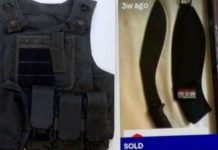
Japan on Thursday, August 6, will mark the 75th anniversary of its atomic bombing on Hiroshima by the US at the end of World War II in 1945. Here are some lesser-known facts around the nuclear bombing that shook the world to its core (literally).

1. At 8.15 a.m., the exact time on August 6, 1945, a uranium-core atomic bomb named “Little Boy” dropped by a US bomber exploded above Hiroshima killing an estimated 140,000 people by the end of that year.
2. Much of the city was incinerated by a wall of heat up to 4,000 C (7,232 F) — hot enough to melt steel — killing tens of thousands.
3. The bomb’s codename, Little Boy was chosen by their creator Robert Serber, who apparently drew inspiration from John Huston’s 1941 film The Maltese Falcon.
4. Before the atomic attacks, the US Air Force dropped pamphlets in Japan, which promised “prompt and utter destruction” and urged civilians to flee.
5. The Hiroshima bombing was so intense that it permanently burned the shadows of people and objects into the ground, known as “Hiroshima shadows”.
6. The oleander is the official flower of the city of Hiroshima because it was the first plant to blossom again after the atomic bomb blast.
7. Again according to Eric Schlosser’s book Command and Control, the bomb was assembled in the air on a moving plane to avoid destruction if it crashed on take-off.
8. Tsutomu Yamaguchi, who worked at Mitsubishi Heavy Industries, who was in Hiroshima for business survived the blast on August 6. However, he went back to Nagasaki the next day and was hit by the second strike. He survived both nukes and died in 2010 at the age of 93. He’s the only person to have survived both explosions.
9. Hiroshima also inspired the film Godzilla, which was released in 1954. The mammoth creature was used as a metaphor for nuclear weapons.
10. A vault at Teikoku Bank survived the explosion, which was manufactured by an American brand called The Mosler Safe Company.
Source: Free Press Journal


































